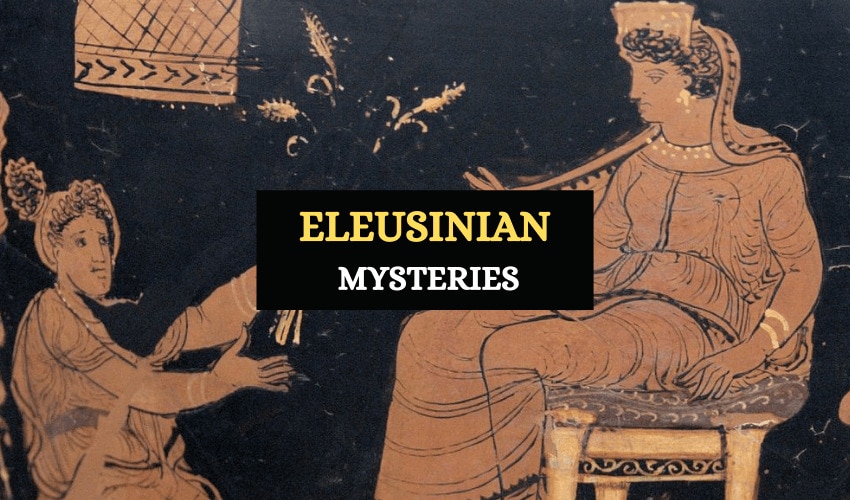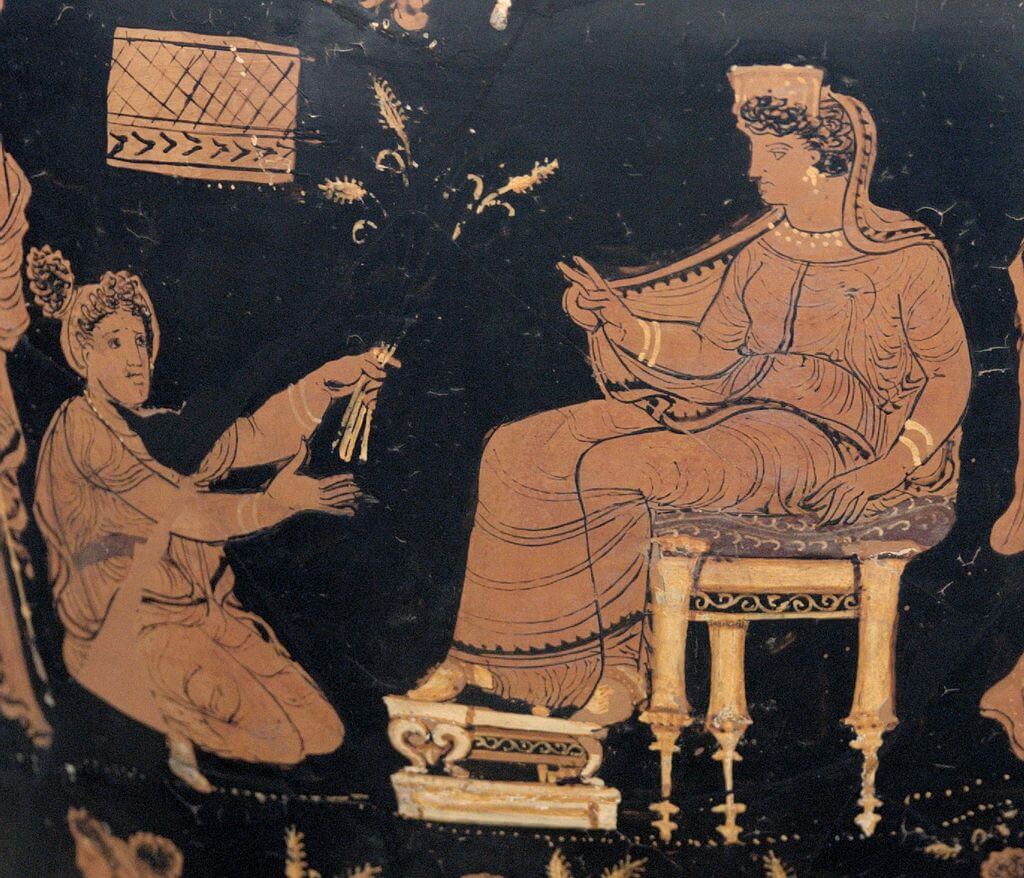
Table of Contents
The Eleusinian mysteries represent the biggest, most sacred, and most revered cult in ancient Greece. Dating back to the Mycenaean period, the Eleusinian mysteries are a celebration of mother and daughter as told in the “Hymn to Demeter”.
It’s a story of deceit, victory, and rebirth that introduces us to the changing seasons of the year and a cult whose mechanism was a great mystery. The festival was so revered that it occasionally brought to pause wars and the Olympics.
The Origin of the Eleusinian Mysteries
The origin of the festival is a classic combination of stories within a story. To understand the real birth of the cult, we need to go back to the beginning of jealous acts of the king of Greek gods, Zeus.
Demeter, was seduced by a human by the name of Iasion. On seeing this, Zeus fatally struck Iasion with a thunderbolt so that he could take Demeter for himself, a union that brought forth Persephone. Persephone would later become the subject of the desire of Hades, the god of the underworld.
Hades asked Zeus for his blessing to marry Persephone to which Zeus agreed. However, aware that Demeter would never agree to perpetually lose her daughter to the underworld, Zeus arranged for Hades to kidnap Persephone. He did this by asking Gaia, the mother of life to plant beautiful flowers near Demeter’s dwelling place so that Hades could get a chance to snatch the young Persephone as she plucked them. Demeter then roamed the whole world in search of her daughter in vain.
In her search, which she did whilst disguised as a human, Demeter came to Eleusis where she was taken in by the Eleusian royal family. The Eleusian queen Metaneira appointed Demeter as the caretaker of her son Demophon who grew to be as strong and healthy as a god under Demeter’s care.

Curious as to why her son was becoming so godlike, Metaneira on one occasion spied on Demeter. She found Demeter passing the boy over a fire and screamed in fear. It was at that point that Demeter revealed her true self and accused Metaneira of interrupting her plan to make Demophon immortal. She then ordered the royal family to build her a temple in Eleusis where she would teach them how to worship her.
While still in Eleusis, the futility of her endeavor to search for Persephone got Demeter so infuriated that she threatened the whole world with famine. It was during this time that other gods, deprived of their sacrifices which the hungry humans couldn’t provide, urged Zeus to reveal Persephone’s location and have her returned to Demeter. However, as Persephone was leaving the underworld to return to earth and to her mother, she was tricked into eating some pomegranate seeds. Because she had eaten food from the underworld, she could never truly leave it, and was forced to return every six months.
The final act of this drama of the gods unfolded in Eleusis where Persephone emerged from the underworld in the Plutonian cave. The Plutonian cave is found in the middle of Eleusis and was believed to unite the energies of the earth and the underworld.
Exuberant to be reunited with her daughter, Demeter was so grateful that she revealed the secret of cultivating grain to humankind and then announced that she would bring happiness to all who would participate in the mysteries and the religious rites of her cult. The cult was then set to be presided over by the high priests known as the Hierophants. The Hierophants came from two chosen families and their torch was passed on from generation to generation.
Symbolism of the Eleusinian Mysteries
The Eleusinian mysteries carry several symbolic meanings all drawn from the myth and the reason the festivals begun in the first place.
- Fertility – As the goddess of agriculture, Demeter is associated with fertility. The growth and yield of crops are attributed to her.
- Rebirth – This symbolism is derived from the yearly return of Persephone from the underworld. When Persephone is reunited with her mother, the world enters spring and summer, symbolizing new beginnings and rebirth. As she leaves, it turns to autumn and winter. This was the ancient Greek explanation for the seasons.
- Spiritual Birth – It is said that initiates who participated in the Eleusinian mysteries experienced a spiritual birth and were united with the divine spirit of the universe.
- A soul’s journey – This symbolism is derived from the promises said to have been given to the initiates during the climax of the festival. They were taught not to fear death, as death was viewed as a positive factor, and were then promised certain benefits in the afterlife. These benefits are only known to the initiates as they were sworn to secrecy and none dared reveal them.
The Eleusinian Festival
The Eleusinian festival was preceded by what was known as the minor mysteries which acted as a preparation for the main festival. These minor mysteries which were conducted in the months of February and March involved ritualistic washing of the faithful in sacred rivers and sacrifices in minor sanctuaries.
After the minor mysteries then came the march of priests and the initiates, also known as the Mystai, from Athens to Eleusis. The procession was characterized by singing, dancing, and carrying of the sacred objects which included torches, myrtle, wreaths, branches, flowers, libations, and ceremonial vessels such as kernoi, plemochoes, and thymiateria.
The greater mysteries were performed in the months of September and October and were open to anyone who spoke Greek and had not committed murder. They included a ritualistic wash in the sea, three days of fasting followed by the rituals performed in the temple of Demeter. The finality of the festival took place in the hall of initiation, which was the Telesterion temple. The revelations made to the initiates at this point were done so after an oath of secrecy was taken. What is commonly known is that they were promised some benefits in the afterlife and that the initiation rites were performed in three stages:
- The Legomena – Loosely translated to mean “things said”, this stage was characterized by the reciting of the goddess’s adventures and the ceremonial phrases.
- The Dromana – Loosely translated to mean “things done”, this stage was characterized by the reenactment of the episodes of Demeter’s myths.
- The Deiknymena – Loosely translated to mean things shown, this stage was only for initiates and only they know what it is they were shown.
In the closing act, water was poured from the vessel, Plemochoe, with one facing East and the other facing West. This was done to seek the fertility of the earth.
Wrapping Up
The Eleusinian Mysteries were seen as a way of seeking hidden knowledge and have been celebrated for over 2000 years. Today the festival is celebrated by members of Aquarian Terbanacle Church who call it the Spring Mysteries Festival.








